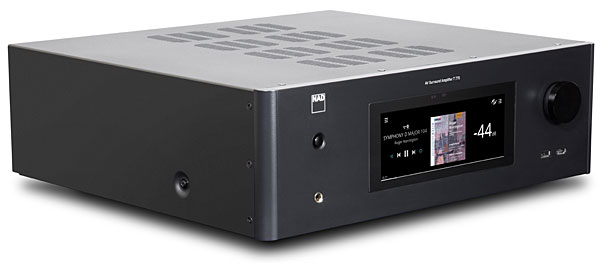Is there any way to select an input directly at the receiver vs the remote? I’m guessing this has a touch screen but not sure how you get to it. If not that seems really useful unfriendly.
Also no volume display sent to the tv screen? Or any other info display like I have on myt787? Again really poor interface. Especially when receiver screen is not visible from seating position.
 For those running rigs with less than nine speakers, you get the flexibility to also configure the surround back amplifier channels as front bi-amp, rear height, or Zone 2. Those wanting to get the full 7.1.4-Atmos/DTS:X experience will need to add an external two-channel amp. (Pre-outs are available for all channels on the T 778.) To round-out my install, NAD sent me its C 268 ($899), an 80-watt stereo amp that powered on (and off) quickly and consistently using one of the T 778's triggers, making the connection totally seamless.
For those running rigs with less than nine speakers, you get the flexibility to also configure the surround back amplifier channels as front bi-amp, rear height, or Zone 2. Those wanting to get the full 7.1.4-Atmos/DTS:X experience will need to add an external two-channel amp. (Pre-outs are available for all channels on the T 778.) To round-out my install, NAD sent me its C 268 ($899), an 80-watt stereo amp that powered on (and off) quickly and consistently using one of the T 778's triggers, making the connection totally seamless.





























































